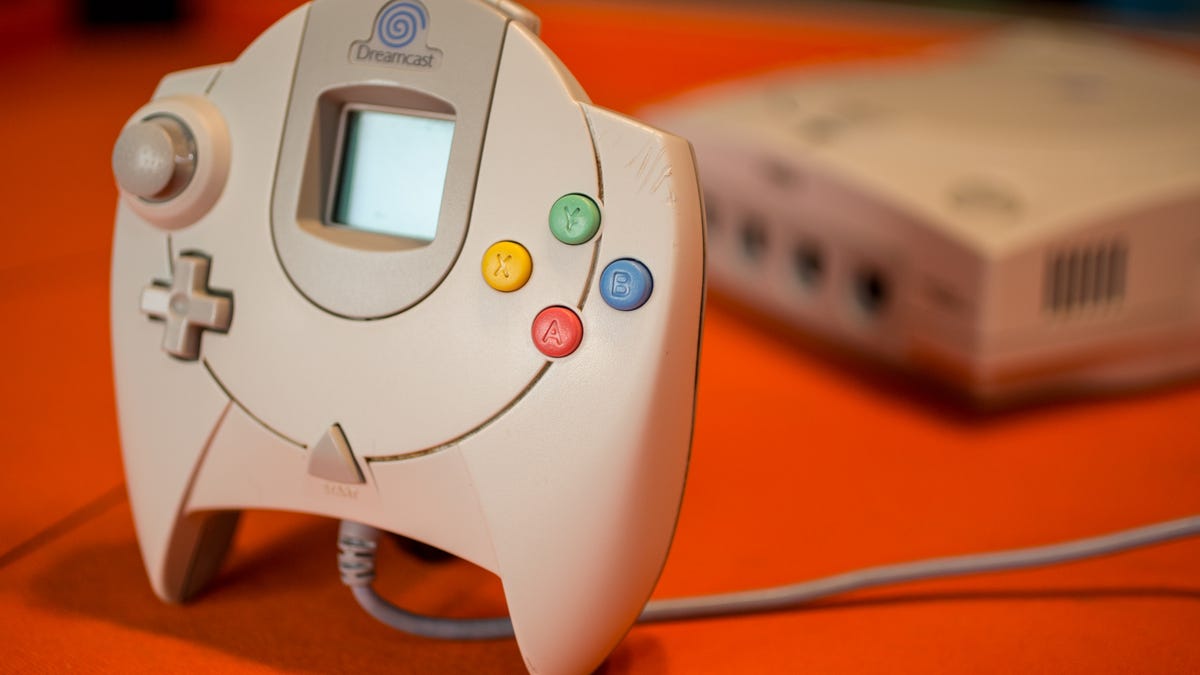6 things a Sega Dreamcast Classic would need to live up to its legacy
Commentary: Soul Calibur? Check. Chao Gardens? Check. The VMU? Maybe!

Make this, only smaller.
At this point, the formula is simple. Take a beloved console, shrink it, toss in a bunch of iconic games, add "Classic" to the name and then ship it to the masses in time for the holidays. Nintendo kickstarted the trend with the NES Classic in 2016 and built upon it with the SNES Classic. Since then, Commodore, Sega and Sony have all launched retro consoles, with varying degrees of success.
Sega's Genesis Flashback came as a particularly clear missed opportunity, given Sega's wild popularity in the 1990s and library of excellent games. And now, as we mark the 20th anniversary of the Dreamcast's North American launch, it's time to consider what a Dreamcast Classic would ideally look like.
Shrink the console and the controller
We reacquainted ourselves with the Dreamcast in the lead-up to our coverage of its 20th anniversary, and three things stand out the moment you put its controller back in your hands.
- It still feels surprisingly solid.
- Without the Visual Memory Unit, it's one of the lightest controllers out there.
- And yet somehow, it's made for the hands of a giant.
As best evidenced by the tiny PlayStation Classic, these retro revamps don't have to emulate the size of their forebears. And Sega should apply the same shrink ray it'd apply to the console to the controller itself. The classic Dreamcast controller is a sea of empty space, and a large amount of its real estate is dedicated to the VMU. Back in 1998, memory cards were still a thing, but in 2018, concern for the VMU can be tossed aside, and the controller can be shrunk to a more comfortable size as a result.
Include two controllers
One of the biggest failings of the otherwise solid NES Classic was its lonely controller. Nintendo learned its lesson and cheered local multiplayer fans by packing two controllers with the SNES Classic. Sony did likewise with its mini PlayStation. Given the Dreamcast's particularly strong multiplayer catalog, an ideal Dreamcast Classic would have to do the same.
Have fun with the VMU
But the VMU doesn't have to be completely ignored just because its physical presence is gone. Though not extensively utilized by every game, the VMU's tiny display embedded in the controller in some cases provided an adorable quirk, like in Soul Caliber's 8-bit renditions of your chosen character, or a vital game-beyond-the-game, as in Sonic Adventure 2's Tamagotchi-meets-Pokemon-meets-terrible-addiction Chao Garden.
So cute! So necessary!
Though it'd be an imperfect replication of the VMU experience, offloading those features into an app would take some work. Given that it's unlikely that other pivotal components of Dreamcast games would likely be shed to cut costs (I'm looking at you, online play), that makes it all the more vital to find a safe, mobile home for your Chao in your pocket.
Though now that it's been mentioned…
Make online work (somehow)
The Dreamcast was the first console to feature a built-in modem, and though it was a bit ahead of its time, it allowed you to play things like Phantasy Star Online, well, online. None of the retro consoles that have been released over the past few years have had online components, which makes sense given the era in which they were originally released.
But as time inevitably moves onward, it'll be increasingly difficult to pry online experiences away from games. Though it would potentially open the door for all sorts of piracy and emulation nightmares (something with which Dreamcast fans are well acquainted), it would be fitting for the first intrinsically online console to be the first online Classic console.
Make nice with third-party developers, especially Capcom
One of the biggest weaknesses of the PlayStation Classic is its lack of iconic games. Metal Gear's in, Crash Bandicoot isn't. Final Fantasy 7's included, Tomb Raider's nowhere to be seen. This is where the Dreamcast's relatively small library is a double-edged sword. No one would criticize Sega for not having a broad 30-game library in a Dreamcast Classic, because who beyond diehard fans can actually name 30 titles?
But that makes getting those crucial titles whose rights exist outside Sega's domain, such as Resident Evil: Code Veronica and Marvel vs. Capcom 2, all the more important. Without Capcom games like those, or Namco's Soul Calibur, a Dreamcast Classic would be sadly incomplete.
Don't forget the cult classics
Games like Sonic Adventure, Soul Calibur, Shenmue and Skies of Arcadia are obvious inclusions, but the Dreamcast's lineup stretches way beyond the obvious. The console was home to a ton of relatively obscure titles like Cyber Troopers Virtual-On Oratorio Tangram and Sword of the Berserk: Guts' Rage. And if Capcom's on board, why not include its weird multifranchise crossover Canon Spike? Or Project Justice?
Actually, the more I think about it, maybe Capcom should just make its own Dreamcast Classic.
All that said, there's no indication Sega is actually working on one. Recent reports have suggested more ports of Sega's Dreamcast titles may be on the horizon, and you can already get a collection of six Dreamcast games for less than $5 on Steam. But looking back on Sega's final, lovable yet fatally flawed final console, it's hard not to wish that those ports would eventually be paired with some hardware.
Originally published Nov. 27, 2018.
Update, Sept. 9, 2019: Adds 20th anniversary of the Dreamcast's launch in North America.

